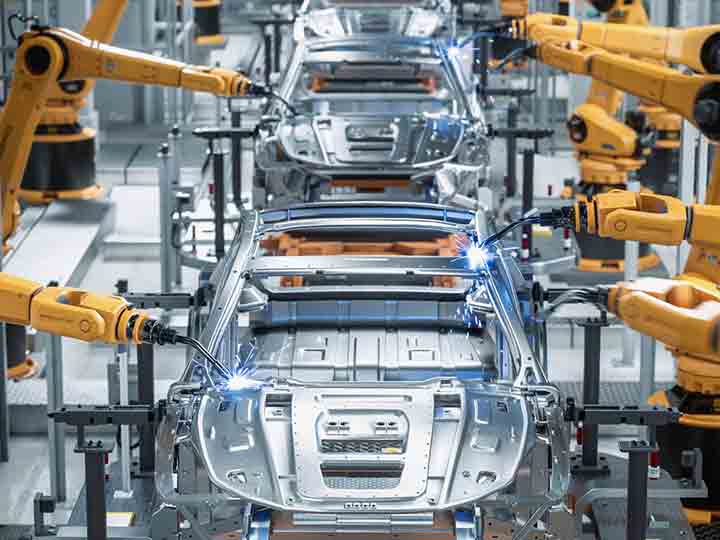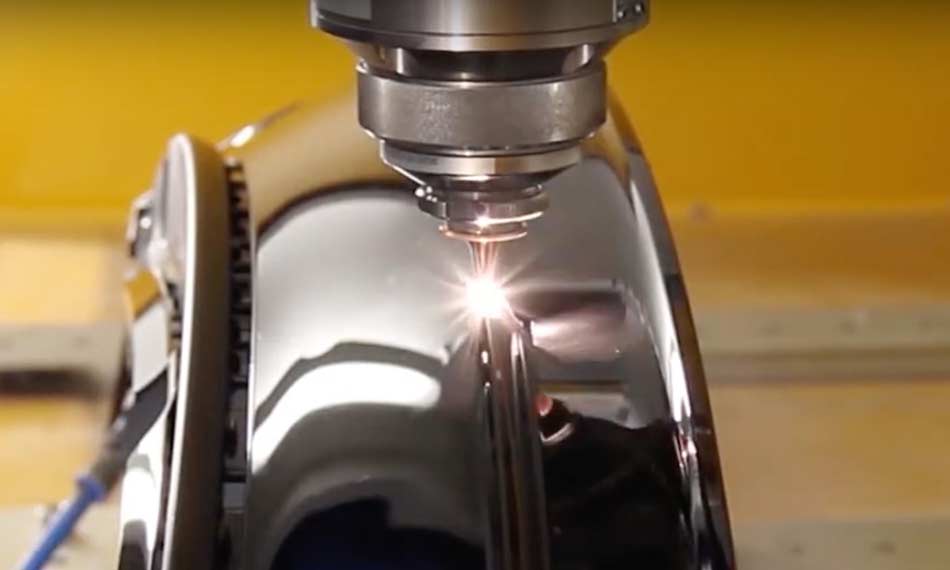Maximéiert Effizienz, Sécherheet a ROI mat ÄremTrumpf-LaserSystem. Dëse komplette Guide kombinéiert Schrëtt-fir-Schrëtt-Astellungsinstruktiounen, fortgeschratt Parameteroptimiséierung a datenbaséiert Ënnerhaltsstrategien, op déi sech Leader am Raumfaart-, Automobil- a Medizinsecteur verlassen. Egal ob Dir Ufänger sidd oder Äre aktuellen Workflow optimiséiere wëllt, déi folgend praktesch Schrëtt hëllefen Iech, d'Fäegkeeten vun Ärem Trumpf-Laserschneider voll auszenotzen.

Trumpf Laser Setup: Best Practices fir Sécherheet a Konfiguratioun
Äre Aarbechtsberäich virbereeden
Propper & ventiléiert Ëmwelt
Ewechhuelt Dreck a garantéiert eng Loftstroumung vun ≥ 120 m³/h (70 CFM), fir Rauchopbau ze vermeiden.
Benotzt laserbewäertte perséinlech Schutzausrüstung: ANSI Z87.1 Sécherheetsbrëll, hëtzebeständeg Handschuesch an Ouermuschelen mat Geräischerënnerdréckung.
Materialinspektioun
Kontrolléiert ob d'Blechplacken (Edelstol, Aluminium, Messeng) dréchen, flaach a fräi vun Ueleg sinn. Kontaminéiert Uewerflächen reduzéieren d'Balkequalitéit ëm bis zu 30%.
Power-On-Sequenz & Gaskalibrierung
Systemaktivéierung
Schalt den Haaptstroum un a waart 10–15 Minutten, bis de Killgerät sech op 18–22 °C (64–72 °F) stabiliséiert huet.
Kontrolléiert den Drock vum Hëllefsgas:
Gastyp Drockberäich Sauerstoff 15–20 bar (220–290 psi) Stéckstoff 12–18 bar (175–260 psi)
Auspuff- a Stëbsmanagement
Start den Ofzuchsventilator a kontrolléiert ob d'Stëbsofzuchsfilter op ≤ 80% Kapazitéit sinn.
Trumpf Laser Kontrolléiere Panel Maîtrise
Touchscreen-Navigatioun
HOME-Knäppchen: Setzt d'X/Y/Z-Achsen op d'Referenznull zréck (entscheedend fir Workflows mat verschiddenen Jobs).
Jog Wheel Präzisioun: Ajustéiert d'Positioun vum Schneidkapp an Inkrementer vun 0,01 mm fir komplex Geometrien.
Programmlader: NC-Dateien iwwer USB, Netzwierk oder d'Trumpf TruTops Boost Nesting Software importéieren.
Diagnostik vum Statusluucht
| LED-Faarf | Bedeitung | Aktioun |
|---|---|---|
| Gréng | Systembereet | Weider mat der Astellung vun der Aarbechtsplaz |
| Giel | Niddrege Gasdrock | Kontrolléiert d'Leitungen op Leckagen oder Ventilverstoppungen |
| Rout | Feeler festgestallt | Dréckt den Noutstopp a kuckt de Feelercode no (z.B. E452 = Iwwerhëtzung vum Objektiv) |
Werkstückausriichtung & Nesting-Optimiséierung
Klemmung & Ursprungsopstellung
Benotzt pneumatesch Klämmen mat 6–8 bar (85–115 psi) fir verzerrt Placken ze befestigen.
Setzt den Urspronkpunkt (X0/Y0) 10 mm vum Blatkant ewech, fir Düsenkollisiounen ze vermeiden.
Trumpf TruTops Nist Tipps
Materialspezifesch Profiler auswielen (z.B. "1mm mëllen Stol" setzt automatesch 3kW Leeschtung, O2-Ënnerstëtzung).
Aktivéiert Common Line Cutting fir den Offall ëm 12–18 % ze reduzéieren.
Simuléiert Werkzeugweeër fir Kollisiounen z'entdecken – entscheedend fir komplex Loftfaartkomponenten.

Schnëttparameter & Optimiséierung vun der Balkequalitéit
Materialspezifesch Astellungen
| Material | Déckt | Leeschtung (kW) | Gastyp | Düsengréisst |
|---|---|---|---|---|
| Edelstol | 3mm | 2.5 | N2 | 1.2" |
| Aluminium | 2 mm | 3.0 | O2 | 1.0" |
| Messing | 4 mm | 4.2 | O2 | 1.4" |
Problemléisung vun der Kantqualitéit
Schlammbildung: Gasdrock ëm 10% erhéijen oder Zoufuhrquote ëm 15% reduzéieren.
Verfärbung: Lënsen botzen a Fokuspositioun kontrolléieren (±0,2 mm Toleranz).
Trumpf Laser Ënnerhalt & Käschte Kontroll
Deeglech/Wöchentlech Aufgaben
Optikpfleeg: Lënsen all 8 Stonnen mat fusselfräien Tücher an 99% Isopropylalkohol botzen.
Mechanesch Schmierung: Kluber NBU 15 Fett op d'X/Y-Schinnen opdroen (2g pro Linearmeter).
Analyse vun de Betribskäschten
| Käschtefaktor | Präisbereich | Optimiséierungstipp |
|---|---|---|
| Gasverbrauch | 8–16/Stonn | Benotzt de Gasspuermodus beim Piercing |
| Lënsenaustausch | 220–450 | Verlängert d'Liewensdauer andeems d'Reflexioun vu Koffer/Messing vermeit gëtt |
| Energieverbrauch | 5–8/Stonn | Eco-Modus am Standby-Modus aktivéieren |
Trumpf Laser vs. Konkurrenten: Schlësselvirdeeler
Geschwindegkeet: 20% méi séier wéi de ByStar Fiber vu Bystronic mat 6 mm Edelstahl (Quell: Industrial Laser Quarterly 2023).
Software: TruTops Boost iwwertrëfft Lantek a punkto Dicht vun den ageschachtelten Deeler ëm 15–22%.
Präzisioun: ±0,05 mm Toleranz vs. Mazak seng ±0,08 mm fir Raumfaart-Schablonen.
Industrieapplikatiounen & ROI Fallstudien
Automobilproduktioun
Aufgab: Auspuffflanschen aus Edelstol schneiden (2 mm).
Parameter: 3,2 kW Leeschtung, O2-Ënnerstëtzung, 45 m/min Zufuhrrate.
ROI: Reduzéiert Schrottkäschten ëm 1.200 $/Mount mat TruTops Common Line Cutting.
Fabrikatioun vu medizineschen Apparater
Aufgab: Mikroschneiden vun Titan-Knachschrauwen (0,5 mm Déckt).
Parameteren: Pulsmodus, 0,8 mm Düse, 98% Argonreinheet.
Resultat: 99,7% defektfräi Deeler mat der Dynamic Line Stabiliséierung vun Trumpf erreecht.

Oft gestallte Froen (FAQ)
Q: Wéi vill kascht en Trumpf Laserschneider?
A: Basismodeller fänken u bei350.000, wärend héichleeschtungsfäeg 12 kW Systemer 1,2 Milliounen iwwerschreiden.
Q: Kënnen Trumpf-Laseren Koffer schneiden?
A: Jo, awer et brauch Infraroutlaser an antireflexiv Beschichtungen, fir d'Oflenkung vum Stral ze verhënneren.
Wann Dir dës Schrëtt befollegt, maximéiert Dir d'Schnëttgenauegkeet, d'Liewensdauer vun der Ausrüstung an d'Produktivitéit vun Ärem Trumpf-Lasersystem. Proaktiv Ënnerhalt, zäitlechLaser Reparatur, an eng lafend Ausbildung vun den Bedreiwer miniméiert d'Ausfallzäit a gläichzäiteg garantéiert se laangfristeg Zouverlässegkeet a super Schnëttresultater.




